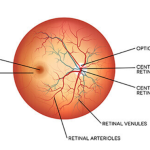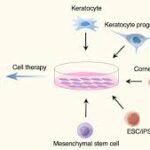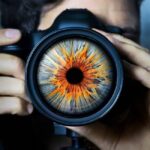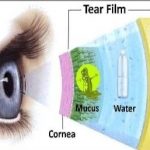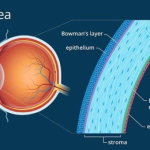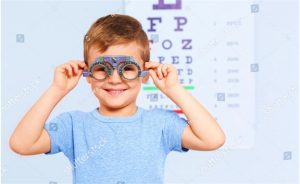INTRODUCTION: The human eye is an extraordinary organ that adapts to both bright and low-light conditions, ensuring clear vision across different environments. Two key structures, the cornea and the lens, play a crucial role in focusing light onto the retina for sharp vision. However, their function is influenced by the amount of light available, leading to distinct differences in day and night vision.
Understanding the Cornea and Lens in Vision
Both the cornea and lens work together to bend (refract) incoming light, focusing it onto the retina, where photoreceptor cells process visual information.
Cornea: The outermost transparent layer of the eye, responsible for most of the eye’s focusing power. Since it has a fixed shape, it provides a constant level of refraction.
Lens: A flexible, transparent structure that fine-tunes focus by changing shape through a process called accommodation. It helps to adjust vision for near and far objects.
While these structures remain the same, their role in creating sharp vision differs significantly in bright and low-light conditions due to changes in pupil size, photoreceptor activation, and light scattering.
Day Vision (Photopic Vision)
In bright conditions, our eyes rely on cone cells in the retina, which provide sharpness, color vision, and high resolution. The cornea and lens support this process as follows:
How the Cornea and Lens Work in Daylight:
Pupil Constriction: Bright light causes the pupil to shrink (miosis), reducing the amount of light entering the eye. This helps minimize distortion and improves sharpness.
Corneal Refraction: The cornea, being the primary refractive surface, bends light and directs it efficiently toward the center of the retina.
Lens Adjustment for Focus: The lens adjusts its shape (thickens for close objects, flattens for distant ones) to ensure sharp focus.
Foveal Vision for Detail: The light is focused precisely on the fovea, the central part of the retina packed with cone cells, allowing for high-resolution and color vision.
Night Vision (Scotopic Vision)
In low-light conditions, the eyes shift to using rod cells, which are more sensitive to dim light but do not detect color. The cornea and lens adapt in the following ways:
How the Cornea and Lens Work at Night:
Pupil Dilation: In darkness, the pupil expands (mydriasis) to allow more light into the eye.
Corneal Light Scattering: At night, light scatters more within the cornea, which may cause halos or glare around bright sources like headlights.
Lens Struggles with Focus: Since rods are distributed across the retina but not concentrated in the fovea, sharp central vision decreases. The lens does not focus as precisely at night.
Peripheral Vision Takes Over: Since rods are located outside the fovea, we rely more on peripheral vision at night, which is less sharp.
Adaptation Mechanisms
The eye takes time to adjust when moving between bright and dark environments.
Dark Adaptation (Entering a Dark Room):
Takes 20–30 minutes for full adaptation.
Rod cells gradually increase their sensitivity to dim light.
Light Adaptation (Moving into Bright Light):
Takes a few seconds to minutes as cone cells take over.
Pupil constricts quickly to prevent excessive light exposure.
Key Differences Between Day and Night Vision
Feature : Day Vision (Photopic) & Night Vision (Scotopic)
Pupil Size : Small (constricted)& Large (dilated)
Primary Photoreceptors : Cones & Rods
Color Vision: Yes (red, green, blue & No (black-and-white)
Sharpness: High (foveal vision) & Lower (peripheral vision)
Light Sensitivity: Low (requires bright light) & High (works in dim light)
Glare Sensitivity: Low & High (due to scattering)
Response Time: Fast & Slow (takes time to adjust)
Conclusion
The cornea and lens are essential for focusing light, but their effectiveness changes with lighting conditions. In daylight, the cornea provides strong refraction, the lens fine-tunes focus, and the pupil constricts to ensure sharp, color-rich vision. At night, the pupil expands, rod cells take over, and scattered light can reduce clarity, leading to a less sharp but more light-sensitive visual experience. The eye’s ability to transition between these modes ensures optimal vision in various environments.


